Religions Hinduism | ||
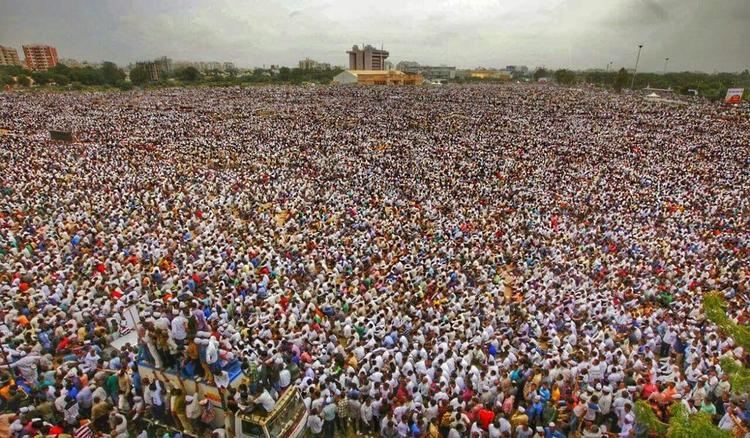 | ||
Languages Marathi and Marathi dialects Populated states Major: Maharashtra
Minor: Goa, Gujarat, Karnataka, Telangana, Chhattisgarh, and Madhya Pradesh. | ||
Ek maratha lakh maratha official song
The Maratha ([ˈməraʈa]; archaically transliterated as Marhatta or Mahratta) is a group of castes in India found predominantly in the state of Maharashtra. According to the Encyclopædia Britannica, "Marathas are people of India, famed in history as yeoman warriors and champions of Hinduism." They reside primarily in the Indian state of Maharashtra.
Contents
- Ek maratha lakh maratha official song
- History
- Internal diaspora
- Varna status
- Political participation
- Military service
- References
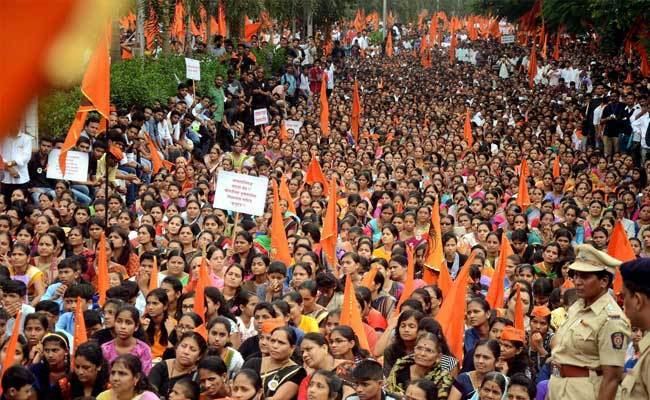
Robert Vane Russell, an untrained ethnologist of the British Raj period, basing his research largely on Vedic literature, wrote that the Marathas are subdivided into 96 different clans, known as the 96 Kuli Marathas or 'Shahānnau Kule' Shahannau means 96 in Marathi. The general body of lists are often at great variance with each other.
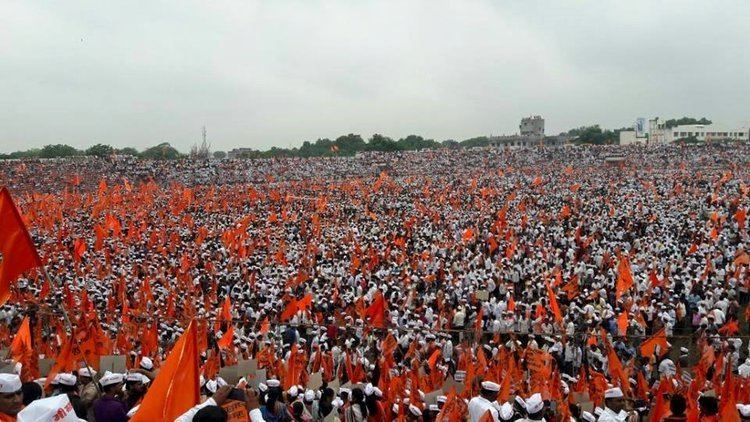
History
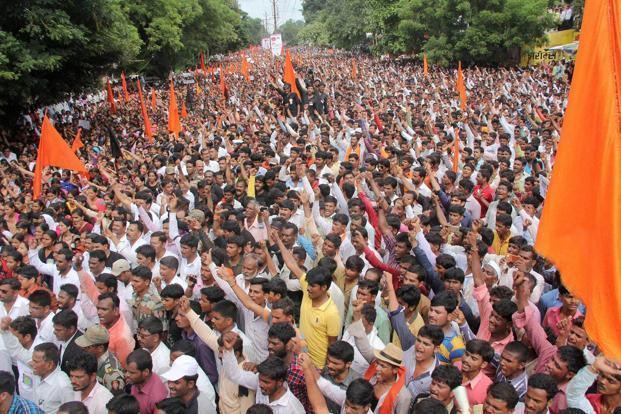
The term "Maratha" originally referred to the speakers of the Marathi language. In the 17th century, it emerged as a designation for soldiers serving in the armies of Deccan sultanates (and later Shivaji). A number of Maratha warriors, including Shivaji's father, Shahaji, originally served in those armies. By the mid-1660s, Shivaji had established an independent Maratha kingdom. After his death, Marathas fought under his sons and defeated Aurangzeb in the war of 27 years.It was further expanded into a vast empire by Maratha Confederacy including Peshwas , stretching from central India in the south, to Peshawar (in modern-day Pakistan) on the Afghanistan border in the north, and with expeditions to Bengal in the east. By the 19th century, the Empire had become a Confederacy of individual states controlled by Maratha chiefs such as Gaekwads of Baroda, the Holkars of Indore, the Scindias of Gwalior, the Puars of Dhar & Dewas, and Bhonsles of Nagpur. The Confederacy remained the pre-eminent power in India until their defeat by the British East India Company in the Third Anglo-Maratha War (1817–1818).
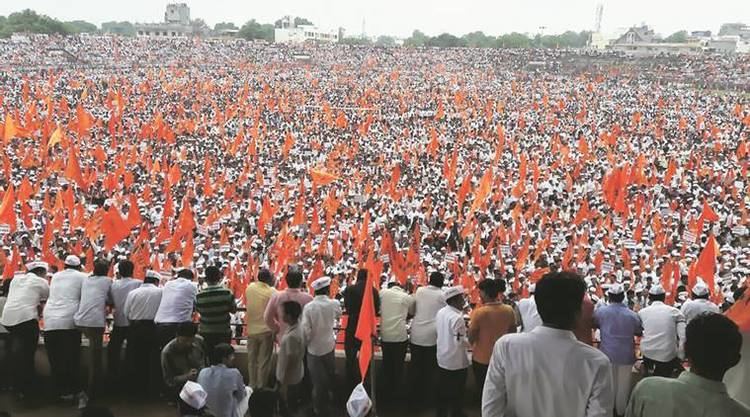
By 19th century, the term Maratha had several interpretations in the British administrative records. In the Thane District Gazetteer of 1882, the term was used to denote elite layers within various castes: for example, "Maratha-Agri" within Agri caste, "Maratha-Koli" within Koli caste and so on. In the Pune District, the words Kunbi and Maratha had become synonymous, giving rise to the Maratha-Kunbi caste complex. The Pune District Gazetteer of 1882 divided the Kunbis into two classes: Marathas and other Kunbis. The 1901 census listed three groups within the Maratha-Kunbi caste complex: "Marathas proper", "Maratha Kunbis" and "Konkani Marathas". The Kunbi class comprised agricultural workers and soldiers. The upper-class "Marathas proper" (comprising 96 clans) claimed Rajput descent with Kshatriya status, and included princes, officers and landowners. Some of the Maratha clans claiming Rajput descent include Bhonsales (from Sisodias), Chavans (from Chauhans), and Pawar (from Parmar).
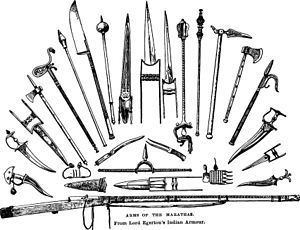
Gradually, the term Maratha came to denote an endogamous caste. From 1900 onwards, the Satyashodhak Samaj movement defined the Marathas as a broader social category of non-Brahmin groups. These non-Brahmins gained prominence in Indian National Congress during the Indian independence movement. In independent India, these Marathas became the dominant political force in the newly-formed state of Maharashtra.
Internal diaspora
The empire also resulted in the voluntary relocation of substantial numbers of Maratha and other Marathi-speaking people outside Maharashtra, and across a big part of India. Today several small but significant communities descended from these emigrants live in the north, south and west of India. These descendant communities tend often to speak the local languages, although many also speak Marathi in addition. Notable Maratha families outside Maharashtra include Scindia of Gwalior, Gaekwad of Baroda, Holkar of Indore, Puar of Dewas & Dhar, Ghorpade of Mudhol, and Bhonsle of Nagpur.
Varna status
The varna of the Maratha became a contested issue after fall of the maratha empire in 1818, with arguments for their being of the Kshatriya (warrior) varna, and others for their being of peasant origins i.e Shudra varna. This issue was the subject of antagonism between the Brahmins and Marathas, dating back to the time of Pratapsing, but by the late 19th century moderate Brahmins were keen to ally with the influential Marathas of Mumbai in the interests of Indian independence from Britain. These Brahmins supported the Maratha claim to Kshatriya status, but their success in this political alliance was sporadic and fell apart entirely following independence in 1947.
Political participation
Marathas have dominated the state politics of Maharashtra since its inception in 1960. Since then, Maharashtra has witnessed heavy presence of Maratha ministers or officials in the Maharashtra state government, local municipal commissions, and panchayats, although Marathas comprise only around 25 per cent of the state population. 10 out of 16 chief ministers of Maharashtra hailed from the Maratha community as of 2012.
Military service
Beginning early in the 20th century, the British recognised Maratha as a martial race. Earlier listings of martial races had often excluded them, with Lord Roberts, commander-in-chief of the Indian Army 1885–1893, stating the need to substitute "more warlike and hardy races for the Hindusthani sepoys of Bengal, the Tamils and Telugus of Madras and the so-called Marathas of Bombay." Historian Sikata Banerjee notes a dissonance in British military opinions of the Maratha, wherein the British portrayed them as both "formidable opponents" and yet not "properly qualified" for fighting, criticising the Maratha guerrilla tactics as an improper way of war. Banerjee cites an 1859 statement as emblematic of this disparity:
There is something noble in the carriage of an ordinary Rajput, and something vulgar in that of the most distinguished Mahratta. The Rajput is the most worthy antagonist, the Mahratta the most formidable enemy.
The Maratha Light Infantry regiment is one of the "oldest and most renowned" regiments of the Indian Army. Its First Battalion, also known as the Jangi Paltan ("Warrior Platoon"), traces its origins to 1768 as part of the Bombay Sepoys. The battle cry of Maratha Light Infantry is Bol Shri Chattrapati Shivaji Maharaj ki Jai! ("Hail Victory to Emperor Shivaji!") in tribute to the Maratha sovereign.
